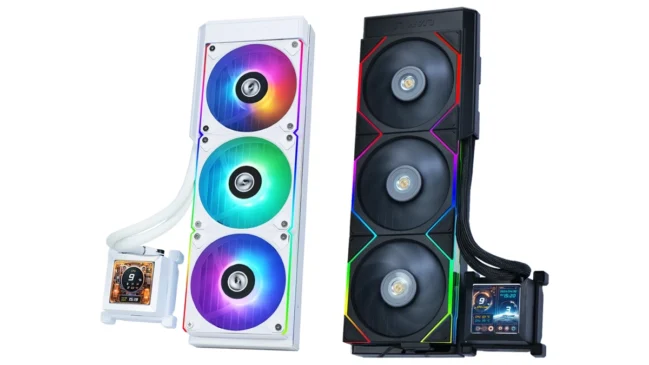
The first ever esports tournament saw 20 gamers gather around Stanford University’s PDP-10 computer to compete for a year’s subscription to Rolling Stone magazine in 1972.
The game of choice was Spacewar, an extremely primitive sci-fi shooter in which battleships were represented by tiny triangles sputtering about a dark background. “Ready or not, computers are coming to the people,” wrote Rolling Stone’s Stewart Brand in his report after watching the action unfold on a computer that looked like a Dalek. “That’s good news, maybe the best since psychedelics.” He admitted that the game was “low-rent, but pervasive” and predicted a glorious future for competitive gaming.
Yet those Californian gamers would have gawped in wonder if they had been shown a glimpse of esports in the modern era. The scene has evolved to the point where tens of millions watch on as their heroes do battle in packed arenas. The leading lights are multimillionaires, replete with sponsorship deals and the levels of adulation previously reserved for rock stars. The graphics are stunning, the gameplay is outrageously intricate and the strategy involved is wonderfully complex. It is a cultural phenomenon and a mark of just how far technology has come.

But how will gamers in 50 years’ time perceive the CS:GO, Dota 2 and League of Legends tournaments of 2019? In many respects, esports remains a pretty basic concept right now: competitive gamers use a PC or a console, equipped with their trusty controller, headset, mouse, keyboard and LED monitor. They link up online or via a Local Area Network and compete for fame and fortune, while fans stream the action and cheer on their favourite teams. They may well indulge in a spot of esports betting as they enjoy the action.
Yet new technology is emerging that has the potential to blow the current formats out of the water. Interest in virtual reality games is soaring in line with technological advances. Oculus Rift, HTC Vive, PlayStation VR and Samsung Odyssey are among the dazzling VR headsets that gamers can now take advantage of. Oculus Quest, which comes with wide camera sensors on the front of the headset, a 6DoF feature and a tracking system called Insight, is ushering in a new era for this technology. The Pimax 8K removes motion sickness and presents you with a 220-degree field of vision. The lightweight Fove uses special eye-tracking technology that can make games responsive to your eyeline and create hyper-realistic depth of vision.
One key difference between current gaming and virtual reality is that the former involves sitting down and the latter involves moving about. Current esports stars look nothing like the chiselled titans of traditional sports, yet virtual reality could be the bridge that brings them together. Eye tracking and hand tracking technology are becoming the norm and the rapidly advancing physical-to-computer interactions get players out of their chairs. This makes stamina, agility, dexterity and endurance more important, and it also heightens the viewing experience for fans.
Augmented reality is improving all the time and the sky is the limit in terms of marrying the physical experience with the virtual one. There may soon come a time when players sitting around, clicking a mouse and bashing a keyboard looks as antiquated as the PDP-10 does today. Right now VR and AR are in their primitive stages and the setup costs are huge, while there are no huge, breakout multiplayer titles. But the technology will come on leaps and bounds, costs will drop, it will become more accessible and it could dominate the industry.
There are certainly hurdles to be overcome. Developers must come up with a way of curating a seamless spectator experience for fans watching VR gaming contests. Fans are accustomed to watching esports on 2D screens, whereas VR esports players are deeply immersed in 360-degree environments. Working out a compelling viewing experience will be challenging.
Oculus Go could help meet that challenge by enable spectators to enjoy the competitions in an immersive, native fashion. Other issues include eyestrain for players, but developers are fixing that and Oculus Quest represents a huge step in the right direction.

Beyond VR, there are all manner of exciting technological developments that could push esports in new directions. Facial recognition and 3D scanning can transport the player’s likeness into the gaming world. Instead of playing as Ezreal and Lee Sin (Two League of Legends characters), contestants could play as themselves. Voice recognition can be used to control much more of the gameplay. Intel RealSense technology allows you to get rid of the controller entirely, as you interact with the device via gesture control.
Technology is evolving rapidly and hardware capabilities have improved enormously over the past few years. That trend only looks set to continue, while faster and more reliable internet connections across the globe will see cloud gaming come to the fore, making gaming as simple to access on the go as music and films. There will be no waiting for updates and it will be cheaper and easier to access via all manner of devices and wearable technology, levelling the playing field and allowing many more people to compete.
Esports will overtake all traditional sports by 2050, according to many experts, but today’s players would barely recognise it if transported to that year. In the next five to 10 years we should see VR and AR become increasingly important and beyond that it will become a much more immersive experience for both viewers and players, underpinned by technology that makes the current suite of hardware look clunkier than a PDP-10.








